SEO Guides, Tips & More!
Learn from Our Experience
Why WordPress?
What do the New York Times Company, the Walt Disney Company, BBC America, Pulse by Target, and maybe your firm’s website all have in common? WordPress! Mickey Mouse and some of the most widely read publishers in the world must be on to something.
WordPress is the most popular content management system (CMS) today, and for good reason. It’s known to be secure, easy to use, and highly customizable – and way more than just a blogging platform or drag-and-drop website builder. Note that for our purposes here, we’re talking about WordPress.org, not WordPress.com. One allows for full customization of themes without restrictions on any plug-ins, and the other one doesn’t.
The other two top choices for building websites, Joomla and Drupal, are perfectly fine but do have some disadvantages compared to WordPress, which will be explored below. Whether the website is already in WordPress or considering switching soon due to a redesign, here are the most important features and benefits to consider.
(Also be sure to read our recent article in Accounting Today on what to consider before starting a website.)
Adaptable and Customizable
One of the nice advantages to WordPress is the flexibility to scale and grow with your needs. If your company starts out with less than 50 pages on your site but adding new service offerings or a microsite means that you need to add new pages, or even change the theme, it can be done. Marketers can add podcasts, a video feed, e-commerce, live chat, secure client portal; whatever is needed, can be done. There are approximately 56,000 available plug-ins that allow a company to customize a site and tweak it. It’s adaptable for smaller websites as well as large, complex sites that serve multiple locations or countries.
Take this search for social media plug-ins, for example. There are more than 300 ways to integrate social media into your WordPress site!
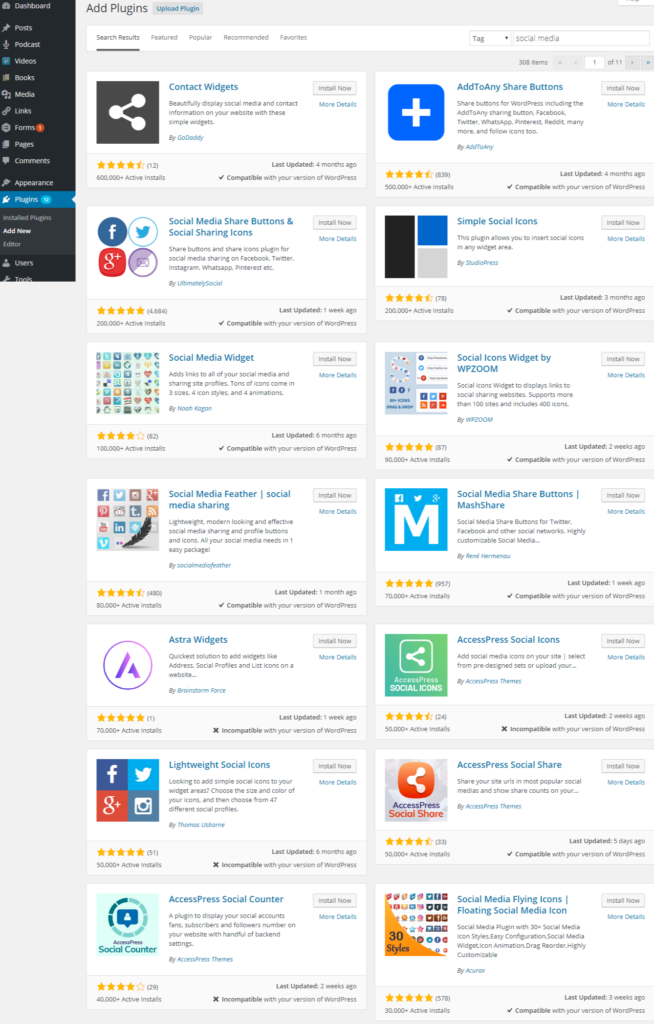
Highly Secure
WordPress is also extremely secure. Hackers can’t get into the core software, as long as it’s updated. The biggest reason why WordPress sites do get hacked is due to out-of-date software, plug-ins, or themes and that’s on you or the website administrator to update! This is easy to do in the administrator dashboard, though. The good news is that if a WordPress site does encounter a security issue, their support team is known to respond quickly.
Plug-ins like Sucuri can help protect your WordPress site against hackers.

Mobile and SEO-Friendly
Built-in features like mobile responsiveness and SEO optimization are two of the reasons that WordPress outranks its competitors. Every WordPress theme also pairs with a mobile version, which can be updated and adapted from within the same back-end dashboard. You probably know that a mobile-friendly website is important to search rankings but might not realize how closely the two are linked. Since Google rolled out one of their algorithm updates in April of last year, simply having a mobile-optimized site increases Google search rankings. Google has a separate mobile search index, and sites that aren’t optimized or even sites with non-mobile friendly pages will be penalized with lower rankings. So, having a CMS that is designed with mobile in mind is an automatic boost to your overall web presence.

WordPress themes are also coded with SEO best practices in mind. Pages are mostly designed using HTML, which is a coding language that’s easy for Google to index. Out of the box, this is already going to improve SEO rankings. The ability to customize permalinks, title tags and images with keywords also help to boost SEO. And since WordPress originated as a blogging platform, it’s content creation functions are very easy to use. The number of available plug-ins also enhances WordPress’s built-in SEO features.
Yoast SEO is a must-have in this regard.
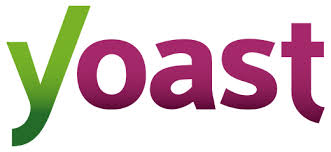
Easy Management
Most marketing teams have more than one administrator who can make changes on the website. WordPress is very admin-friendly, and access can be granted to multiple users with varying permission levels. There are six levels: Administrator, Editor, Author, Contributor, Subscriber, and Super Admin. Administrators can do everything – publish content, update plug-ins, edit code (use caution), delete other users; the Super Admin is a role you’d only see on multi-site networks.
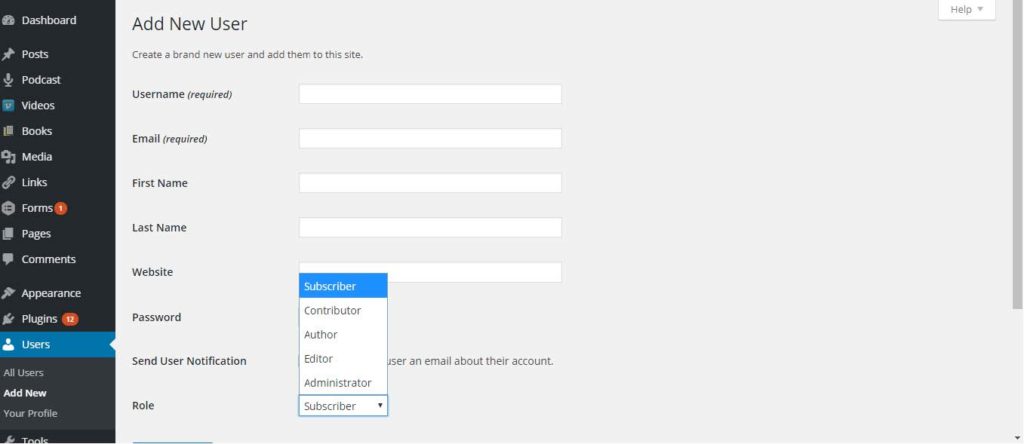
This is helpful when the marketing director needs to be the Administrator, but the marketing coordinator only needs to moderate blog comments and upload content (s/he would be an Editor) and one of the partners wants access to publish his or her own content (s/he would be an Author, able to publish their own content but not alter or access anything else on the site). Other CMS platforms have multiple user roles too, but WordPress’s are very easy to manage and you can have confidence knowing that users can understand enough to get around without much training.
This resource delves into each role in more detail if you’re curious.
Intuitive
Finally, WordPress’s interface is really easy to use without much in-depth training. Publishing a new post or page looks very similar to any word processing document. Building a site is relatively simple and doesn’t require knowledge of HTML or PHP, although if you do want to customize a theme, a developer will need to be an expert in these languages to avoid damaging the site. The back-end dashboard is easy for most people to navigate, so updating your site will be a breeze.

What Do WordPress Sites Look Like?
Because WordPress is easily customizable, it can look like just about anything. Here are just a few noteworthy screenshots of well-designed WordPress sites. Notice the flexibility in theme design and how it can be scaled to fit even complex sites.
Here’s a wealth management firm:

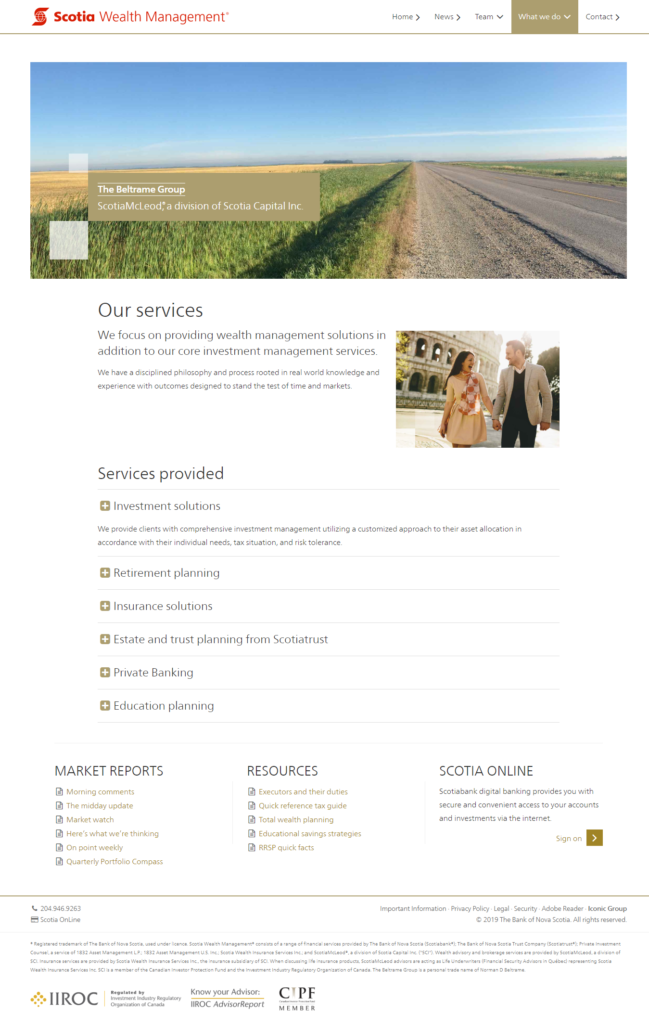
And a law office:

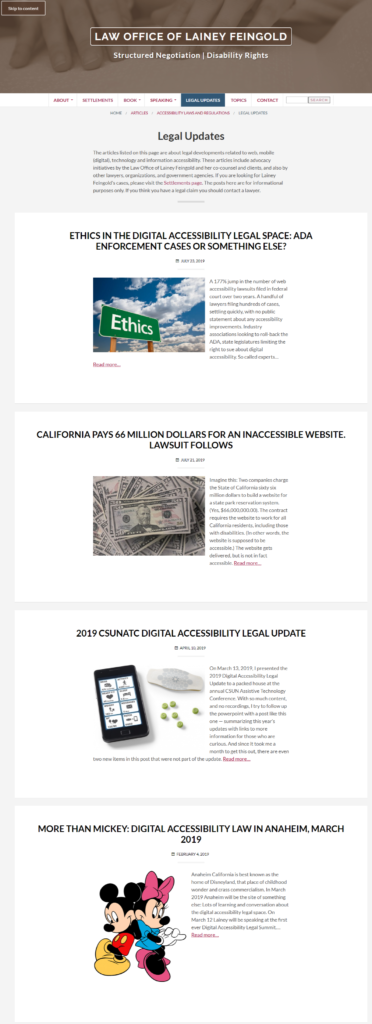
And here’s CPA firm Gumbiner Savett Inc.:
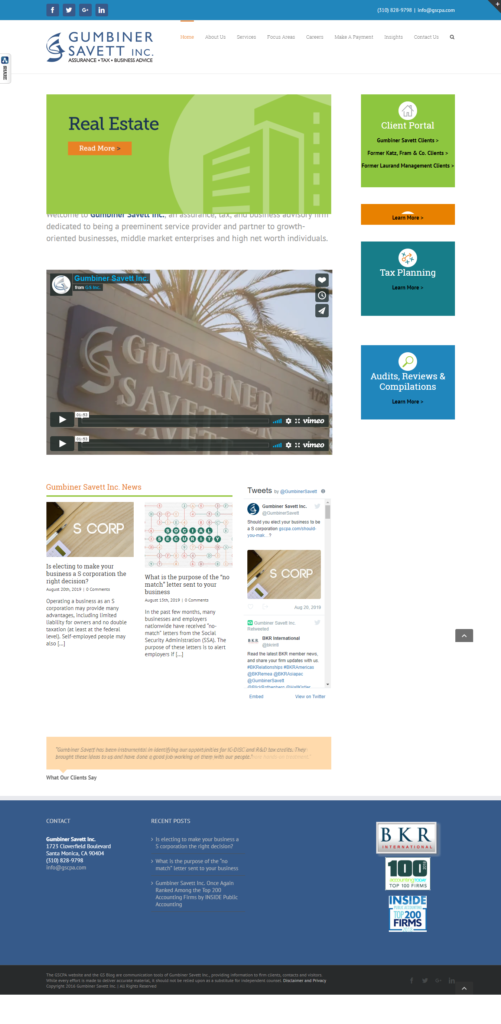
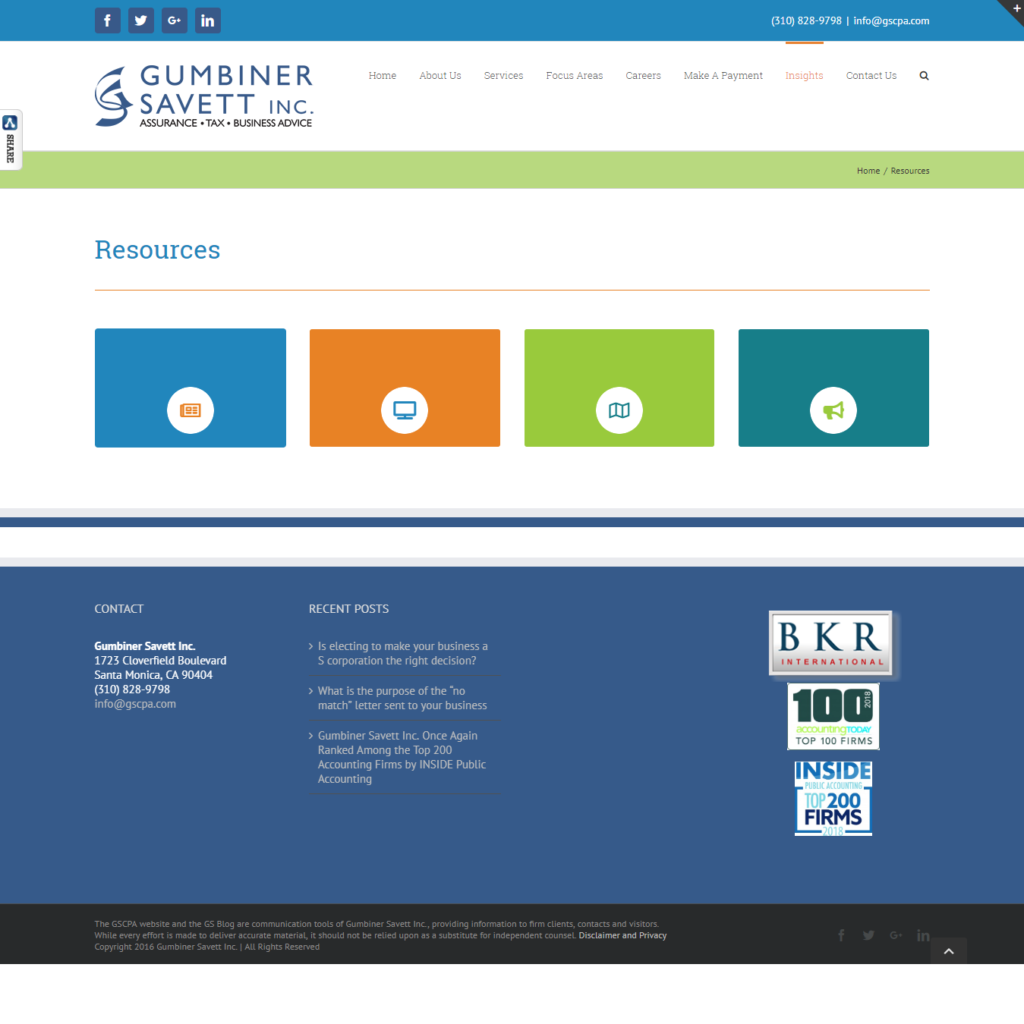
WordPress vs. Joomla vs. Drupal
There are still plenty of sites built in Joomla and Drupal, the number two and three CMS platforms, respectively. They each have their own benefits, or they wouldn’t still be popular choices. They still have a lot in common: open source software, robust support community, and based in PHP and MySQL. Plug-ins are how each platform affords customization.
Joomla first: installing it is simple but navigating the back-end administration gets complicated. The dashboard has several separate sections and is not laid out in an easy-to-navigate structure like WordPress. It will take time to learn where to access pages (called Articles), plug-ins (called Extensions), and where and how to make edits to site menus, individual page elements, and so on. Joomla is known for being a CMS that excels for e-commerce sites, but WordPress extensions can make this difference negligible. There are far fewer design options with Joomla, but many available Extensions aka plug-ins.
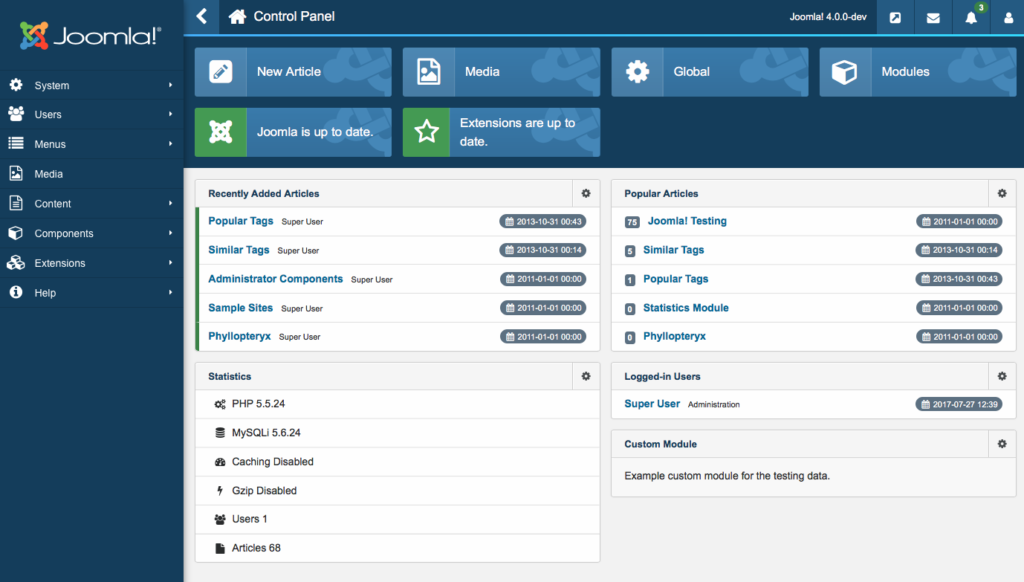
View this and other Joomla back-end screenshots here, courtesy of Joomlashack.com.
Now on to Drupal, a CMS built for developers. The back-end administration is easy enough to navigate, but the core software is very limited. Modules, or plug-ins, are required to get a Drupal site up and running, whereas WordPress will work on its own without plug-ins. Modules aka plug-ins can also be difficult to find without specialized knowledge about particular ones. WordPress, on the other hand, comes ready to go as soon as it’s installed and makes it very simple to search for and install new plug-ins. Drupal sites are built with content and flexibility in mind; it’s a robust platform with a lot of design flexibility, but one that comes with a steep learning curve unless you’re already a pro at coding.
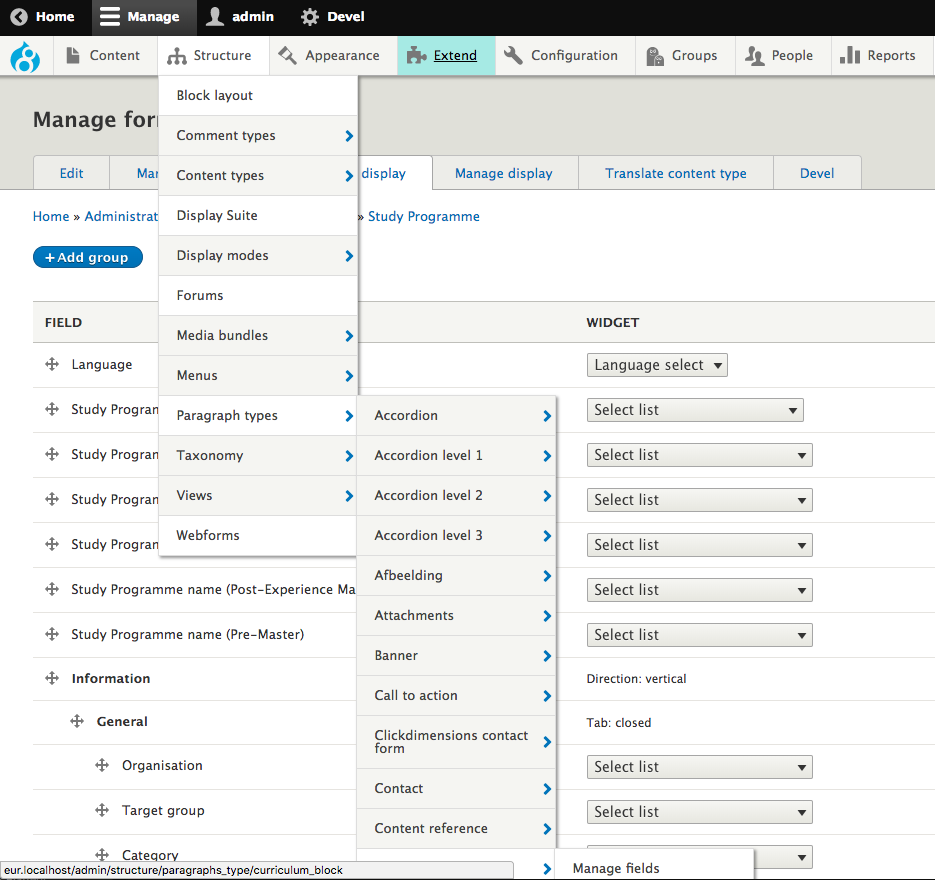
Thanks to drupal.org for this screenshot!
WordPress usually will be cheaper to build a site with due to its many out-of-the-box features and ease of finding a developer skilled in WordPress design. In terms of technical know-how and cost, Joomla is in the middle, with Drupal requiring the most amount of technical knowledge to design and maintain.
For these reasons, we think the clear winner for most websites is WordPress.
Why Professional Services Firms Should Use WordPress
Although web designers will have their preferences for which platform they build websites on, we advocate for choosing a designer who works with WordPress. Professionals in law firms, accounting firms, and the like are experts in their fields, but not web development. So working with WordPress, with its built-in functionalities and intuitive design, makes it easy for your firm partners to get on board. They can understand how the site works without any technical details. Joomla, on the other hand, requires rather intensive training to manage, and Drupal is a complex platform.
WordPress will also give your firm a professional, modern look and feel that you can’t get with platforms like Wix or Squarespace. Those platforms are the true “drag and drop” website builders, and it will show. WordPress is also easy to update, so many of the costs of maintaining a Joomla or Drupal site can be brought in-house. And like we mentioned before, WordPress is extremely scalable and works well for small firms and large firms alike.
Finally, because WordPress is so well-known and easy to use, most marketing teams will be able to use it. This is especially helpful for firms that redesigned a website in Joomla or Drupal (or a custom designer-led CMS) with one marketing director, but then that person leaves. Finding a replacement who knows WordPress is easy; requiring knowledge of Joomla or Drupal will be harder to find.
Check out this resource for inspiration on WordPress themes for accounting firms.
What do you think – is WordPress a better CMS solution than its competitors?
We’d love to hear your feedback in the comments.

